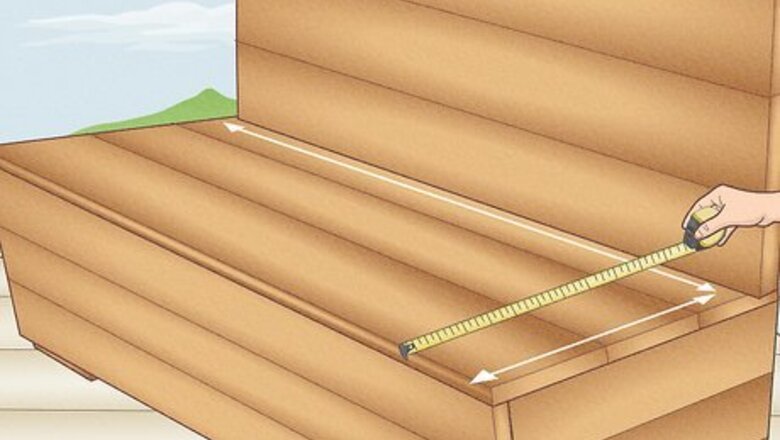
views
Measuring and Prepping the Cushion

Measure the length, width, and depth of the bench seat. This will help you figure out just how much fabric and foam you'll need to make your cushion. Once you have your measurements, double the length to find out how long your piece of fabric needs to be. If you want a little wiggle room for your cushion to move around on the bench, subtract an inch from the length.
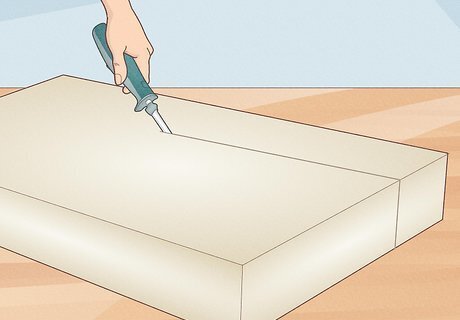
Cut foam the size of your bench. Trace the size of your bench seat onto the foam with a marker or pen using a ruler. Next, cut the foam to size using an electric knife. You want to use a blade with a serrated edge when cutting foam as it makes it easier to smoothly cut the foam particles. If you don’t have an electric knife, a serrated steak knife or turkey carver can also do the trick. There are many types of foams out there, ranging in density and thickness. We suggest using a 2 or 4 in (5.1 or 10.2 cm) thick foam for maximum comfort.
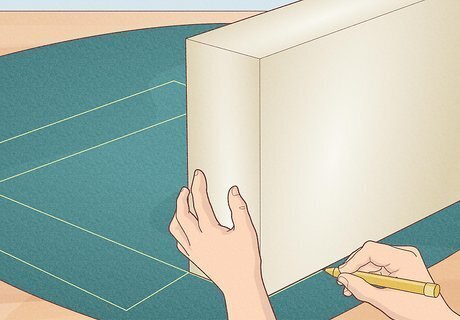
Trace a pattern on the back of your fabric. Lay your fabric out flat on a hard surface, making sure the back of the fabric is facing up. Set your piece of foam or cushion on top of the fabric. With a marker or pen, trace around the cushion. Next, gently lift the foam onto its side, keeping the edge on the line you just made. Trace around this side the same way. Repeat this process until all sides of the cushion (except for the bottom) have been traced. In the end, your pattern should look like an unfolded box. This step will help you get an exact pattern or guide. If patterns aren’t your thing, no worries! You can also cut out individual pieces of fabric for each side of the cushion. This works best if you’re making a cushion cover with a zipper or non-removable cover.
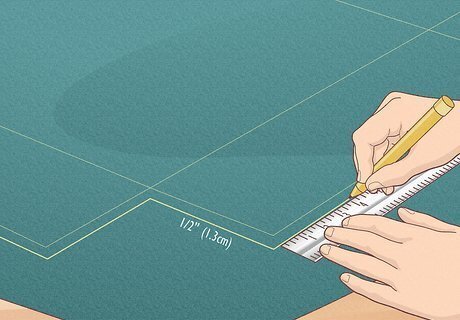
Add a ⁄2 inch (1.3 cm) seam allowance to the edges of the pattern. With a ruler, trace a border around your pattern that’s ⁄2 inch (1.3 cm) thick. This will be the area between the edge of your fabric and the stitching that holds everything together. If you’re a sewing beginner, try outlining the seam allowance in a different color than the pattern. This will help you differentiate everything while sewing.

Cut out your pattern along the seam allowance line. Your bench cushion pattern is all ready to go! Just remember to keep your pattern wrong side up. In other words, your tracing lines should always be facing you.
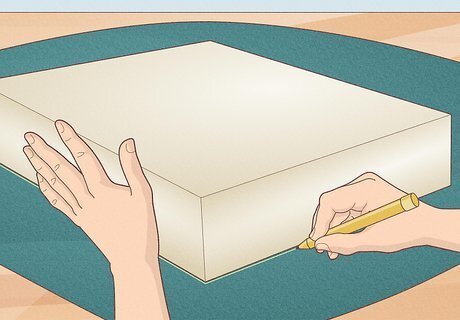
On another piece of fabric, trace the bottom of your cushion. With the fabric face down, outline the top of the foam as you did before. This will serve as the bottom piece of your cushion cover.
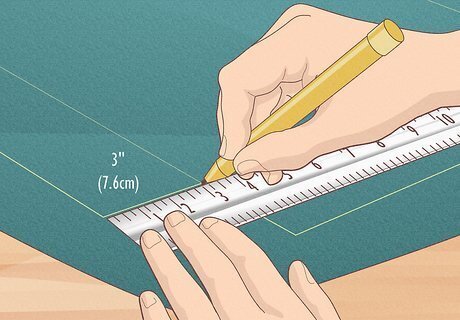
Add 3 inches (7.6 cm) to the width and length to the bottom of your outline. The cushion cover will close envelope style, meaning it will have an overlapping opening on the bottom. Because of this, the fabric has to be a bit bigger than the actual size of the foam. Use a ruler to extended the border of your outline, dragging down the lines you’ve already made by 3 inches (7.6 cm). For example, if your foam is 11 by 7 inches (28 cm × 18 cm), the bottom piece of fabric should be 14 by 10 inches (36 cm × 25 cm).
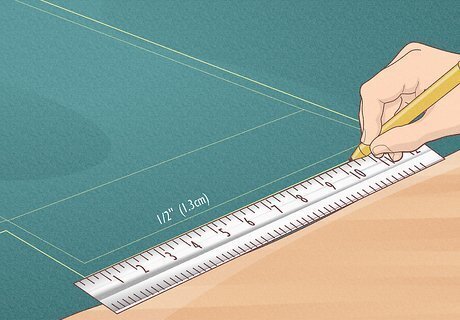
Create a ⁄2 inch (1.3 cm) seam allowance to the bottom fabric’s pattern. As before, this will ensure that there is enough fabric for you to work with when it’s time to sew everything together. Simply use your ruler to create a ⁄2 inch (1.3 cm) border around your outline.

Cut the bottom piece of fabric following the seam allowance border. This will remove any excess fabric.
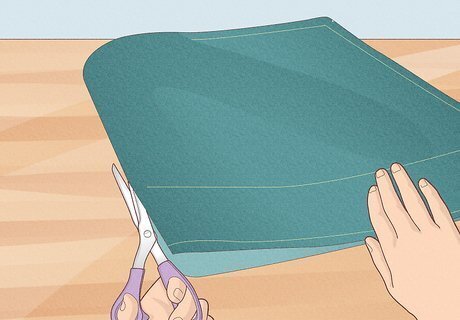
Fold the fabric in half horizontally and cut along the crease you’ve made. Set these two pieces of fabric aside for later.
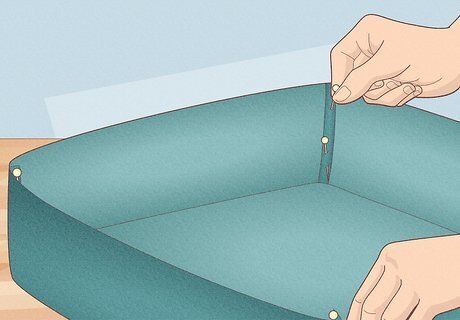
Box in the corners of the fabric. Take the top two left corners of the fabric, pinch them together, and fold them toward the bottom right-hand corner. This will create a box corner. Pin your fold together, and repeat with the other three corners. When all corners are pinned, the fabric should look like a box without a lid. If you’re using fabric with a design, pay close attention to the print. Make sure the pattern or design matches at the seams before pining or sewing everything together.
Sewing the Cushion
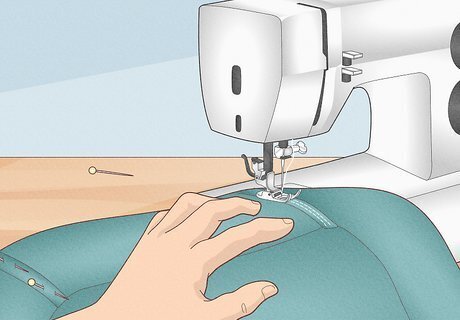
Sew down each of your pin lines with a straight stitch. With a sewing machine, follow the pin lines on all corners to secure the box corners. If your fabric frays, use a zig-zag stitch on the edges before starting the straight stitch. The stitching shouldn’t show when you're finished, but you can still use a thread color that matches your fabric just in case.
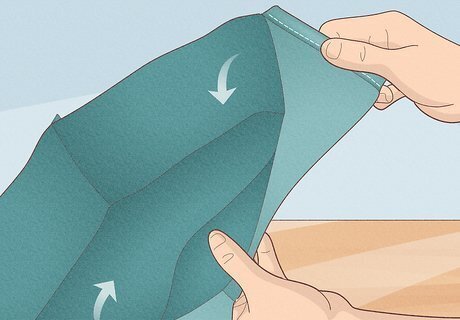
Turn the sewed fabric inside out. And there you have it. You’ve successfully made box corners—congrats! Now’s the time to test out if your cover fits the foam before finishing everything off. Wiggle the fabric onto your cushion. If it fits snuggly, move on to the next step.
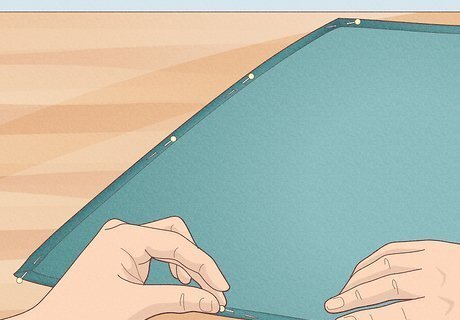
Create a ⁄2 inch (1.3 cm) hem on the two pieces of fabric you set aside earlier. On the long side, fold down ⁄2 inch (1.3 cm) of the fabric. Pin your single-fold hem in place, and repeat on the two shorter sides, leaving one of the long sides without a hem. Do this on both pieces of fabric.
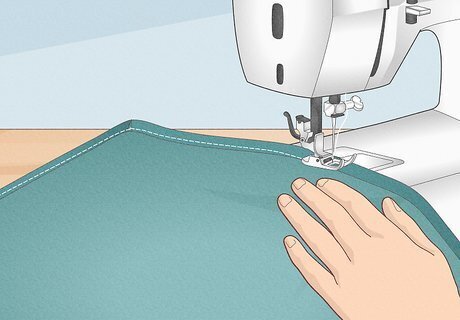
Do a straight stitch along your hems. For each piece of fabric, there should be three sides hemmed, leaving one of the longer sides unhemmed.

Overlap the two pieces of fabric to create an envelope. Match up the seam allowance of the fabrics with the long hemmed side in the middle. Place your foam piece on top of the fabric to ensure the cushion sits in the space between the seam allowance lines. If the foam doesn’t match up with the fabric, no worries! Create a smaller envelope with the fabric by pulling the pieces farther apart until the foam matches up.
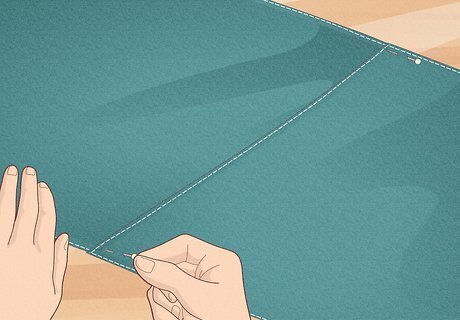
Pin the sides of the fabric pieces together. Bring these pieces back to the sewing machine to join the two outward edges together with a straight stitch.
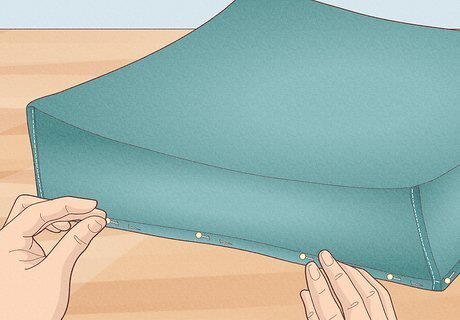
Connect the box corner and envelope pieces. Flip the box corner piece you made before inside out, so the seams and stitching are visible. Turn the envelope over with the right side facing up—the stitching should be face down. Place the box on top of the envelope and pin the corners together. If you’re using a patterned fabric, double-check that the design is or is close to matching up.
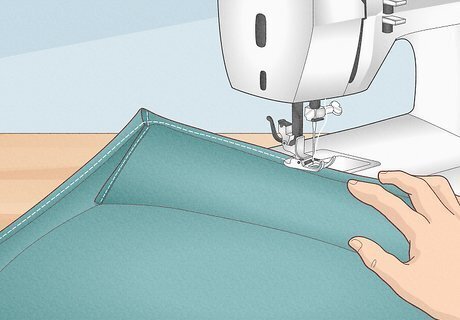
Sew the pinned pieces together with a straight stitch. Use a sewing machine and follow the pin line.

Turn the fabric right side out and slide the foam in. You did it! You’ve made a removable bench cushion with box corners and envelope opening. Now, all that’s left to do is sit back and enjoy the comfort and practicality of your latest craft.



















Comments
0 comment